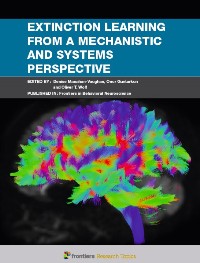DFG Research Unit 1581
Overarching Hypotheses of FOR 1581
Extinction Learning: Behavioral, Neural and Clinical Mechanisms
1) A neural system for extinction learning:
The neural signatures of extinction and renewal were mostly studied in the context of fear conditioning in rats. We hypothesize that also outside of fear conditioning similar neural structures are active and contribute identically. For the hippocampus we assume a context-relevant contribution. The prefrontal cortex contributes to extinction retrieval and thus also plays a critical role in renewal. We further assume that memory for the initial excitatory conditioning and its subsequent extinction is stored in those structures that participate in the processing of the CS and the US.
2) Distinct learning networks:
Excitatory and inhibitory conditioning involves partly distinct neural structures. Both the hippocampus and the prefrontal cortex are not necessarily involved in the initial acquisition of the conditioning process.
3) The structure-specific role of NMDA-receptors:
Extinction learning is based on activation of NMDA-receptors in hippocampus and prefrontal cortex.
4) Extinction involves attention:
Extinction within a new context goes along with an increased activation of attentional resources. This can be tested behaviorally. At the neurobiological level, we assume an activation of cholinergic and/or noradrenergic systems during the initial extinction period.
5) Context and extinction:
We assume that extinction learning is facilitated by a context change conducted after initial acquisition.
6) Reminders destabilize the trace:
The provision of a reminder cue activates a reconsolidation process. Extinction learning or pharmacological manipulations that target the reconsolidation of the initially acquired engram shortly after reactivation can produce the erasure or a long-lasting inability to retrieve once established memories. These processes have recently been elaborated in the fear system. We assume to find similar processes in other systems.
7) The efficacy of extinction can vary with pathology:
The efficacy of extinction contributes to pathology and/or to clinically-relevant markers in healthy individuals. Variability in extinction learning and magnitude of fear renewal/reinstatement is related to clinical/subclinical forms of pain sensitivity and responsiveness to extinction-based treatments in anxiety.






 Don't forget...
Don't forget...
